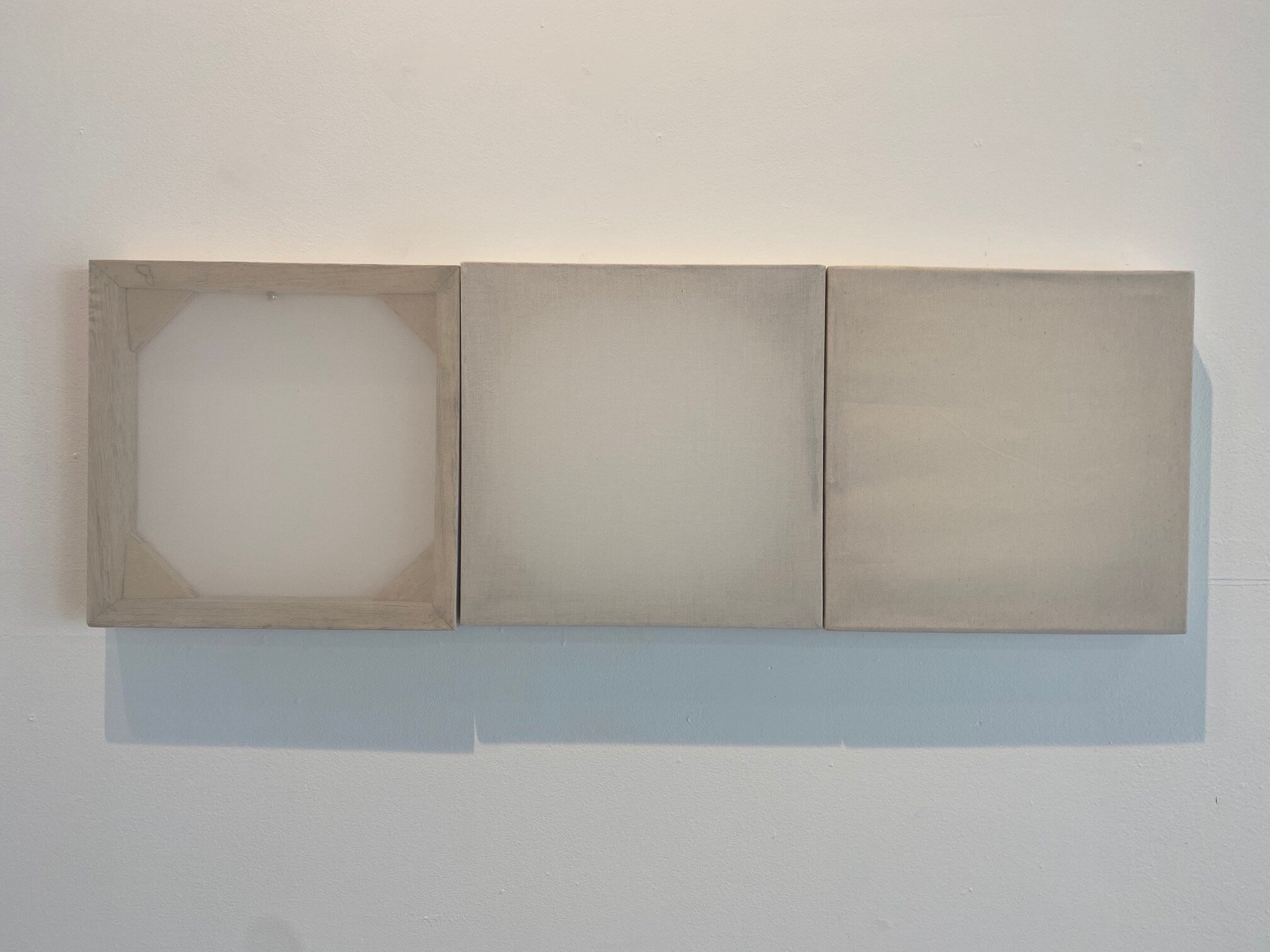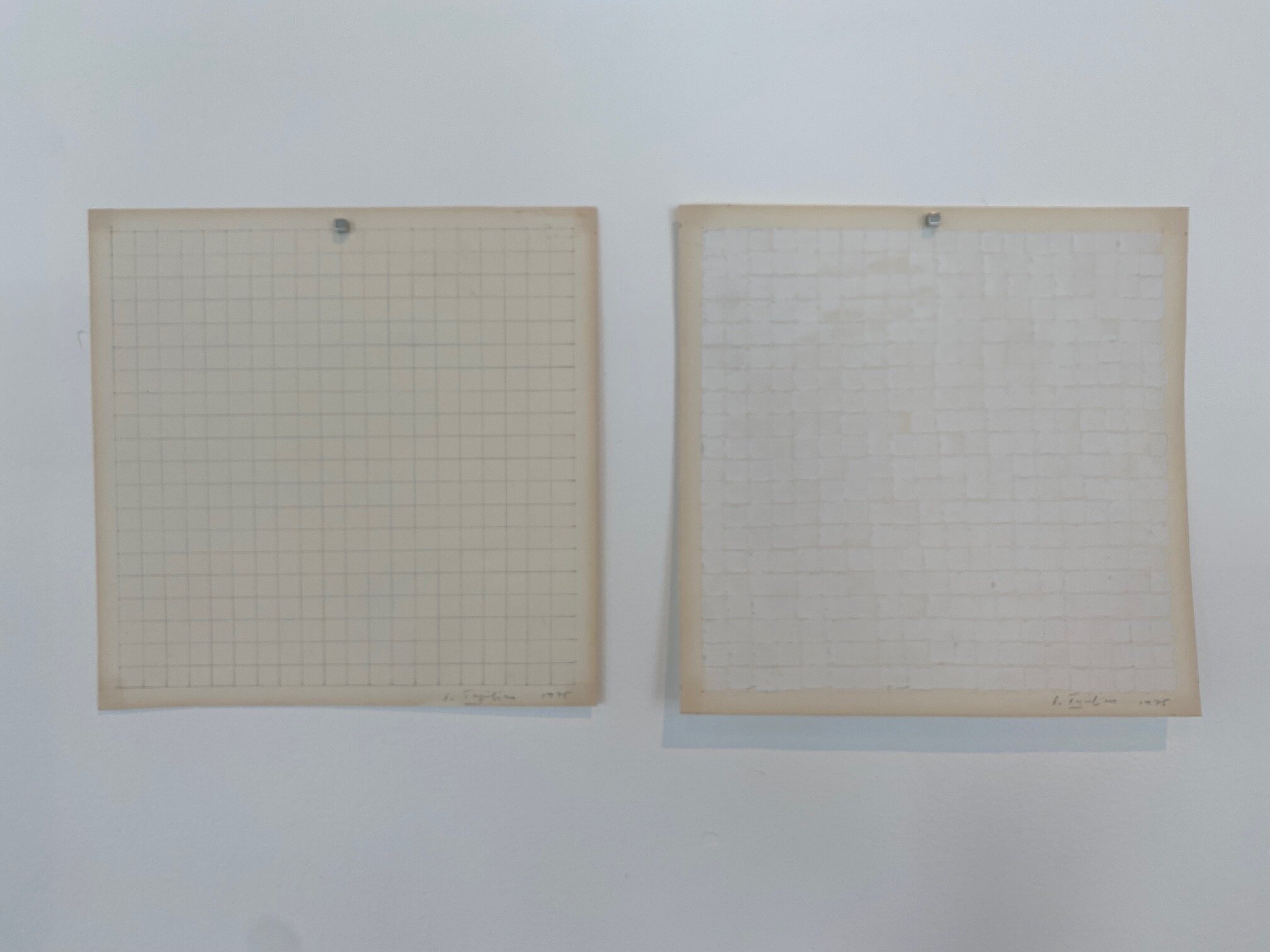“ Through a reductionist practice associated with drawing and matter and their condition in the physical space, the artist was reflexively questioning geometric abstraction, a gesture emerging from the conceptualism”
— Carlos Palacios
Pedro Tagliafico | MATERIAL EXPANSION
September 23rd - November 20th, 2021
META Miami and Henrique Faria New York are pleased to present Material Expansion, Pedro Tagliafico’s first solo exhibition at the foundation's Wynwood space. This exhibition features a selection of works in different media (painting, drawing, and print) produced in the 1970’s.
Referring to the artist’s oeuvre, art historian and independent curator Carlos Palacios wrote: "Against the dominant backdrop of socio-political painting and geometric abstraction (the major trends in the Venezuelan art of the 1970s), the works presented by Pedro Tagliafico (Caracas, 1944) in this exhibition stand out precisely because of their discrete, elegant, yet radical presence. At that time they meant a substantial shift in the incipient Venezuelan contemporary art, dominated by the expressive grandiloquence of pictorial representation and the visual features of local kinetic art: the last traces of its artistic modernity. Strictly poetic, Tagliafico’s images reveal the relationships proposed by the artist in the use of a range of new materials in the art scene of the times. Through a reductionist practice associated with drawing and matter and their condition in the physical space, the artist was reflexively questioning geometric abstraction, a gesture emerging from the conceptualism of which Pedro Tagliafico was an exponent along with other Venezuelan artists.
For them, the need for taking a critical distance from Venezuelan abstraction was an obligation, almost an essential one. The numerous formal compositions, based on highly rationalist views about the visual perception of art developed by a preceding generation (represented by Alejandro Otero, Jesús Soto or Carlos Cruz-Diez, for instance), revealed there was a huge gap between those and the new concept of sensitivity, closer and more participatory, linked to materiality. Artists such as Tagliafico focused on a direct and sensory interrelationship with the human body: a strategy his generation was aiming to explore.
When the artist created the works here exhibited–works that belong to a specific body of work made during the second half of the 1970s– he combined the local contemporary art proposals with the knowledge acquired in his close contact with the most advanced trends in European art. During those years, Tagliafico divided his stay between Italy and Venezuela; therefore, his work stood on a fertile mixture of several influences; in this context, it is worth mentioning the slightly minimalist and povera nature of his production. Pedro Tagliafico’s pieces gathered in this exhibition are, in turn, a good presentation of another interest of Venezuelan art from the 1970s: the persistence of grids and squares, recurrent motifs which refer to the shifts and overlays of the various techniques and languages, such as the ones between painting and graphic design (one of the most important artistic practices in Venezuelan art). They also stress the gradual disappearance of color in favor of the prominence of materiality itself. Finally, it is worth noting that Pedro Tagliafico is one of the few exponents who introduced minimalist and arte povera strategies into the Venezuelan art scene.
In this sense, it is no coincidence that the artist lived many years in Brescia, Italy; and although arte povera emerged over a decade before these works, this artistic movement survived until the mid-1970s. The interest in materials and their organic movement in space as well as in their physical nature came up as an aesthetic motif that was an alternative to the strict geometric abstraction. This summarizes the strategies that members of the active Povera movement and Pedro Tagliafico have in common. Unlike Italian artists, however, Venezuelan artists are inclined to a more careful and rigorous treatment of materials in the context of the frame and the painting, using the basic elements of art, such as lights and shadows, drawings and composition..”
Pedro Tagliafico (Caracas, 1944) began his studies at the Escuela Cristóbal Rojas in Caracas from 1958-1962 and continued his artistic development at the Royal School of Art in London from 1964-1965 and then at the Ecole des Beaux Artes in Paris from 1965-1968. Tagliafico has been exhibiting since 1971. Individual exhibitions of his work have been held at galleries and institutions such as the Museo Arte Contemporáneo de Caracas (1976); the Alternative Museum, New York (1977); Galerie Dieter-Mueller Roth, Stuttgart (1981); Centro Arte Galeter, Brescia (1991); Museo Alejandro Otero, Caracas (1999); Galería Spaziozero, Caracas (2005); Alonso Garcés Galería, Bogotá (2012) and Oficina #1, Caracas (2014). His work has been awarded numerous distinctions including Mention of Honor at the Salon Arturo Michelena, Caracas (1973), Mention of Honor Joan Miró, Barcelona (1974), and the International Association of Art Critics’ International Award (1987). His work has been acquired by international institutions, which include Museo de Arte Contemporáneo, Caracas; Casa de las Americas; Fundación Cisneros; Museo Alejandro Otero; and Fundación Banco Mercantil. Tagliafico lives and works between Venezuela and Colombia.
GALLERY VIEWS













